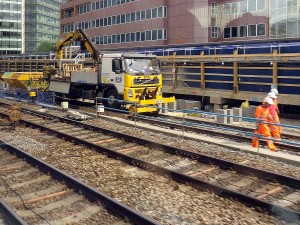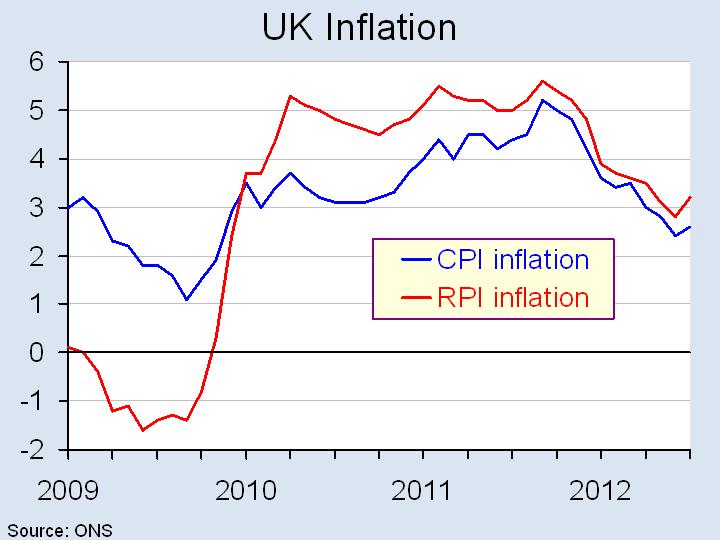 Rail companies will be permitted to raise average regulated rail fares next year by 6.2%. Not surprisingly, this has been met with dismay and anger by rail travellers, especially long-distance commuters, who could see their annual season tickets going up by several hundred pounds.
Rail companies will be permitted to raise average regulated rail fares next year by 6.2%. Not surprisingly, this has been met with dismay and anger by rail travellers, especially long-distance commuters, who could see their annual season tickets going up by several hundred pounds.
Some fares, such as advance tickets, are unregulated. Others, such as anytime, off-peak and season tickets, are regulated by the government. The formula for working out permitted price rises for regulated fares is RPI plus 3%, where RPI is the July annual inflation rate based on the retail price index.
The RPI figure was announced by the ONS on 14 August and was a surprisingly high 3.2% – up from 2.8% in June: see Table 21 in the ONS’s CPI And RPI Reference Tables, July 2012. (Click here for a PowerPoint of the chart on the left.) Hence average fares can rise by 3.2% + 3% = 6.2%.
Rail travellers are angry on three counts:
First, the RPI measure of inflation is generally around 0.5% higher than the CPI measure (which is used for working out public-sector pay increases and the uprating of pensions and benefits). The July figure for CPI inflation was 2.6%.
Second, the extra 3% added on top of RPI means that that rail fares are going up more rapidly than other prices, and incomes too. The reason given for this is to shift the burden of funding the railways from the taxpayer to the traveller.
Third, the formula applies to average fares. Rail companies can raise particular regulated fares by up to 5 percentage points more than the formula provided they raise other fares by less than the formula. Thus some fares are set to rise by 11.2% – including some of the most expensive season tickets.
The government justified the increases by arguing that the higher fares will allow more investment by the rail companies, which could result in lower costs in the future. Nevertheless, two thirds of the revenue from the above-inflation increases will go to the government and only one third to the rail companies.
Webcasts
 Inflation shock as rail fares set to soar Channel 4 News, Ciaran Jenkins (14/8/12)
Inflation shock as rail fares set to soar Channel 4 News, Ciaran Jenkins (14/8/12) Protests as rail fare price rises announced The Telegraph (14/8/12)
Protests as rail fare price rises announced The Telegraph (14/8/12) How do our rail fares compare with the rest of Europe? BBC News (14/8/12)
How do our rail fares compare with the rest of Europe? BBC News (14/8/12) Rail fare increase will make life better, says minister BBC News (14/8/12)
Rail fare increase will make life better, says minister BBC News (14/8/12) Passenger Focus: Train companies ‘using dark arts’ BBC News, David Sidebottom (14/8/12)
Passenger Focus: Train companies ‘using dark arts’ BBC News, David Sidebottom (14/8/12)
Articles
Rail fares set to increase by 6.2% Financial Times, Mark Odell (14/8/12)
Rail fares set to rise by 6.2% in January Guardian, Gwyn Topham (14/8/12)
Rail fare hike of 6.2% sparks angry reaction BBC News (14/8/12)
Soaring rail fares will do nothing for the recovery The Telegraph (14/8/12)
Commuters plead with Osborne to prevent 10 per cent rise in rail fares Independent, Oliver Wright (15/8/12)
Rail fare rises: how to keep your ticket prices as low as possible Guardian, Mark King (14/8/12)
Documents and information
Fares Review Conclusions 2003 Strategic Rail Authority (June 2003)
Fares Office of Rail Regulation
Fares on National Rail Association of Train Operating Companies
Questions
- What are the arguments for and against the general principle of using an RPI+X formula for regulating rail fares?
- What are the arguments for and against allowing train operating companies to raise regulated rail fares by an average of RPI plus 3%, with 2 of the 3 percent above RPI inflation going to the government?
- In what ways are travellers likely to respond to the higher prices?
- Why are some travellers likely to have a much lower price elasticity of demand for rail travel than others? What determines this price elasticity of demand?
- What externalities exist in rail transport? How should this impact on the government’s rail pricing strategy?
- How is infrastructure development funded for (a) rail, (b) roads and (c) airports? Does this lead to an efficient allocation of transport investment?
- How does rail pricing in the UK compare with that in other European countries? Should other European countries follow the UK’s policy of above inflation fare increases to fund rail investment?
